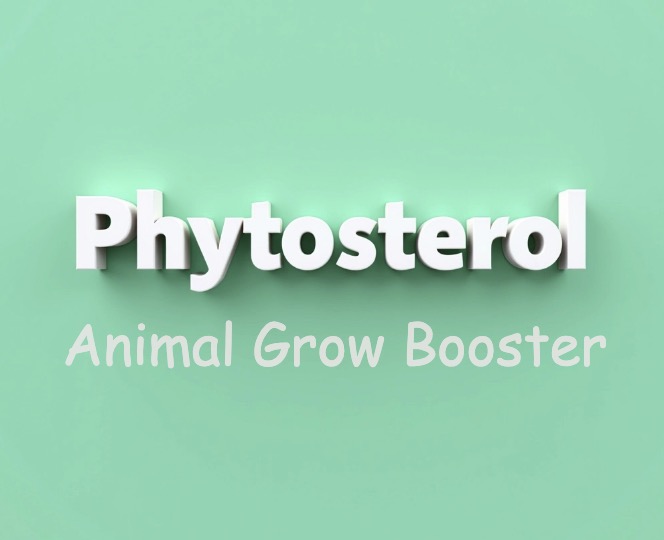Phytosterols, plant – derived sterols with a structure similar to cholesterol, offer several benefits when used in shrimp farms. Here’s a detailed look at their applications:
1. Growth and development
- Enhanced nutrient utilization
- Phytosterols can improve the digestibility and absorption of nutrients in shrimp. They may enhance the activity of digestive enzymes in the shrimp’s digestive tract, such as lipases and proteases. This leads to better breakdown and absorption of dietary lipids, proteins, and carbohydrates, providing more energy and building blocks for growth. As a result, shrimp fed with phytosterol – supplemented diets tend to have higher growth rates and better feed conversion ratios.
- They can also increase the bioavailability of fat – soluble vitamins (A, D, E, and K) in the diet. These vitamins are essential for various physiological processes in shrimp, including vision, bone development, and antioxidant defense.
- Promotion of molting
- Molting is a critical process for shrimp growth and development. Phytosterols can influence the hormonal balance in shrimp related to molting. They may stimulate the production of ecdysteroids, which are hormones that regulate the molting cycle. By promoting regular and successful molting, phytosterols help shrimp grow to their full potential and reduce the risk of molting – related problems, such as incomplete molts or molting mortality.
2. Immune system enhancement
- Antioxidant activity
- Phytosterols possess antioxidant properties. They can scavenge free radicals in the shrimp’s body, which are produced during normal metabolism or in response to environmental stressors such as high stocking densities, poor water quality, and temperature fluctuations. Oxidative stress can damage cells and tissues in shrimp, weakening their immune system. By reducing oxidative stress, phytosterols help maintain the integrity of the immune cells and enhance the overall immune function of shrimp.
- Modulation of immune – related genes
- Phytosterols can modulate the expression of immune – related genes in shrimp. They may up – regulate the production of immune factors such as antimicrobial peptides, cytokines, and lysozymes. These immune factors play important roles in the shrimp’s defense against pathogens, including bacteria, viruses, and fungi. As a result, shrimp with enhanced immune function are more resistant to diseases and have a higher survival rate in the farm environment.
3. Stress resistance
- Temperature and salinity stress
- Shrimp are often exposed to fluctuations in water temperature and salinity, which can cause stress and affect their health and growth. Phytosterols can help shrimp adapt to these environmental changes. They may stabilize cell membranes and maintain the normal physiological functions of cells under stress conditions. For example, in the face of sudden temperature drops or increases in salinity, phytosterol – supplemented shrimp are better able to maintain their metabolic rates and physiological homeostasis, reducing the negative impact of stress on their growth and survival.
- Disease – related stress
- When shrimp are infected with pathogens, they experience stress due to the immune response and the damage caused by the disease. Phytosterols can support the shrimp’s immune system during this period, helping them fight off the infection more effectively. They may also reduce the inflammation associated with the disease, which can further improve the shrimp’s recovery and survival chances.
4. Lipid metabolism regulation
- Cholesterol management
- Similar to their function in other animals, phytosterols can compete with cholesterol for absorption in the shrimp’s digestive tract. They can reduce the absorption of dietary cholesterol and promote its excretion. This helps maintain a healthy lipid profile in shrimp, preventing the excessive accumulation of cholesterol in tissues, which could otherwise lead to health problems and affect the quality of shrimp products.
- Improvement of lipid utilization
- Phytosterols can enhance the utilization of dietary lipids in shrimp. They may stimulate the activity of lipid – metabolizing enzymes, such as lipoprotein lipase, which is involved in the breakdown and utilization of triglycerides. This leads to a more efficient use of lipids for energy production and growth, reducing the amount of unused lipids that could accumulate in the shrimp’s body.
5. Application in shrimp feed
- Dosage
- The appropriate dosage of phytosterols in shrimp feed depends on factors such as the shrimp species, age, and the specific composition of the feed. Generally, the addition level ranges from 100 – 500 mg/kg of feed. However, it is recommended to conduct small – scale trials on the farm to determine the optimal dosage for a particular shrimp population.
- Formulation
- Phytosterols can be incorporated into shrimp feed during the feed – manufacturing process. They can be added in powder or liquid form, depending on the feed production technology and the compatibility with other feed ingredients. It is important to ensure uniform mixing of phytosterols in the feed to ensure that all shrimp receive the appropriate amount.

